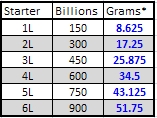CidahMastah
Well-Known Member
- Joined
- Nov 12, 2010
- Messages
- 4,201
- Reaction score
- 46
OK,
I am stumped on this one and think that there must be something going on, potentially with water chemistry or similar. I need some guru help to sort this out because I am about to dump a dunkel. I already know people will say infection... I just don't think that is the issue. But feel free to fire away. This doesn't taste like an off taste per say - something seems to be wrong in the brew, not the process or sanitary aspects.
To date I have brewed:
A Blood orange hefe (WLP 351 - new yeast)
68-69F
B Bavarian Hefe (1068 - new yeast)
68F
C Blood orange hefe (WLP 351 - washed yeast, 1st generation)
62-64F
D Dunkel (WL351 - washed yeast, 1st generation)
62F for 4 days
68F for 4 days they room temp
Each of the 4 hefe styled brews has had a sour tang to it. With the best version being the brew C. I think that since the BO version uses a late hop addition that is aromatic it helps to minimize the sour tang. I think the ferment temps that are lower made the vanilla/banana come through much better. However this one still has a slight sour tang to it that is discernible.
Some notes:
1. The bavarian hefe, which friends drank and thought was great, had the sour tang since memorial day weekend and I just tried some recently and it is still there.
2. My current dunkel is quite sour and not undrinkable. But I found myself saying... if I am going to enjoy a beer, this one ain't it!
Final note. I am looking to make a hefe that is very franziskaner like. Slightly sweet, with that banana vanilla aftertaste. Franziskaner, or darn near any commercial hefe I have tried does not have a sour or tang aftertaste.
I need a hefe doctor.
Thanks!
I am stumped on this one and think that there must be something going on, potentially with water chemistry or similar. I need some guru help to sort this out because I am about to dump a dunkel. I already know people will say infection... I just don't think that is the issue. But feel free to fire away. This doesn't taste like an off taste per say - something seems to be wrong in the brew, not the process or sanitary aspects.
To date I have brewed:
A Blood orange hefe (WLP 351 - new yeast)
68-69F
B Bavarian Hefe (1068 - new yeast)
68F
C Blood orange hefe (WLP 351 - washed yeast, 1st generation)
62-64F
D Dunkel (WL351 - washed yeast, 1st generation)
62F for 4 days
68F for 4 days they room temp
Each of the 4 hefe styled brews has had a sour tang to it. With the best version being the brew C. I think that since the BO version uses a late hop addition that is aromatic it helps to minimize the sour tang. I think the ferment temps that are lower made the vanilla/banana come through much better. However this one still has a slight sour tang to it that is discernible.
Some notes:
1. The bavarian hefe, which friends drank and thought was great, had the sour tang since memorial day weekend and I just tried some recently and it is still there.
2. My current dunkel is quite sour and not undrinkable. But I found myself saying... if I am going to enjoy a beer, this one ain't it!
Final note. I am looking to make a hefe that is very franziskaner like. Slightly sweet, with that banana vanilla aftertaste. Franziskaner, or darn near any commercial hefe I have tried does not have a sour or tang aftertaste.
I need a hefe doctor.
Thanks!






















![Craft A Brew - Safale S-04 Dry Yeast - Fermentis - English Ale Dry Yeast - For English and American Ales and Hard Apple Ciders - Ingredients for Home Brewing - Beer Making Supplies - [1 Pack]](https://m.media-amazon.com/images/I/41fVGNh6JfL._SL500_.jpg)






































